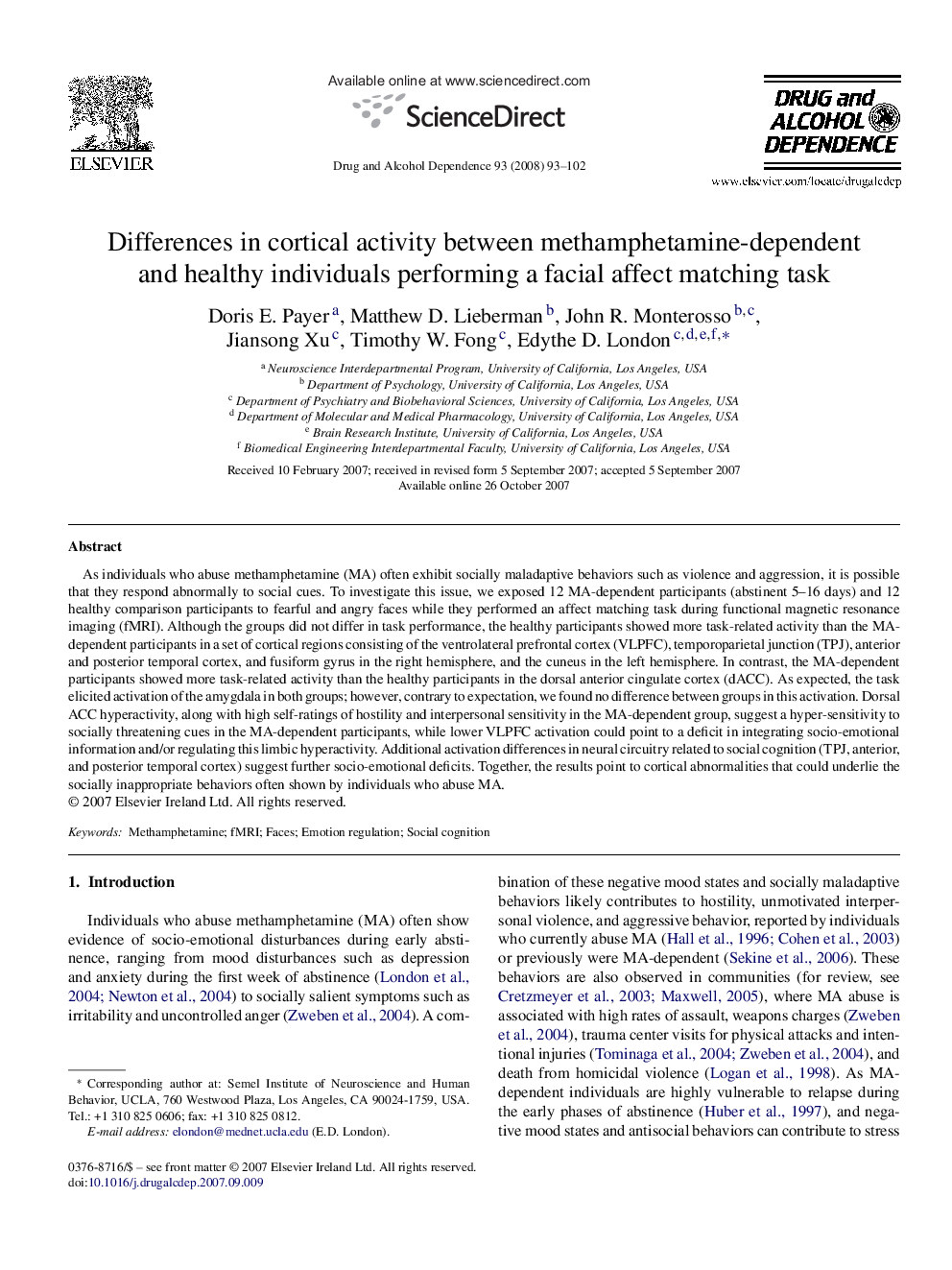| کد مقاله | کد نشریه | سال انتشار | مقاله انگلیسی | نسخه تمام متن |
|---|---|---|---|---|
| 1071589 | 1486199 | 2008 | 10 صفحه PDF | دانلود رایگان |

As individuals who abuse methamphetamine (MA) often exhibit socially maladaptive behaviors such as violence and aggression, it is possible that they respond abnormally to social cues. To investigate this issue, we exposed 12 MA-dependent participants (abstinent 5–16 days) and 12 healthy comparison participants to fearful and angry faces while they performed an affect matching task during functional magnetic resonance imaging (fMRI). Although the groups did not differ in task performance, the healthy participants showed more task-related activity than the MA-dependent participants in a set of cortical regions consisting of the ventrolateral prefrontal cortex (VLPFC), temporoparietal junction (TPJ), anterior and posterior temporal cortex, and fusiform gyrus in the right hemisphere, and the cuneus in the left hemisphere. In contrast, the MA-dependent participants showed more task-related activity than the healthy participants in the dorsal anterior cingulate cortex (dACC). As expected, the task elicited activation of the amygdala in both groups; however, contrary to expectation, we found no difference between groups in this activation. Dorsal ACC hyperactivity, along with high self-ratings of hostility and interpersonal sensitivity in the MA-dependent group, suggest a hyper-sensitivity to socially threatening cues in the MA-dependent participants, while lower VLPFC activation could point to a deficit in integrating socio-emotional information and/or regulating this limbic hyperactivity. Additional activation differences in neural circuitry related to social cognition (TPJ, anterior, and posterior temporal cortex) suggest further socio-emotional deficits. Together, the results point to cortical abnormalities that could underlie the socially inappropriate behaviors often shown by individuals who abuse MA.
Journal: Drug and Alcohol Dependence - Volume 93, Issues 1–2, 11 January 2008, Pages 93–102